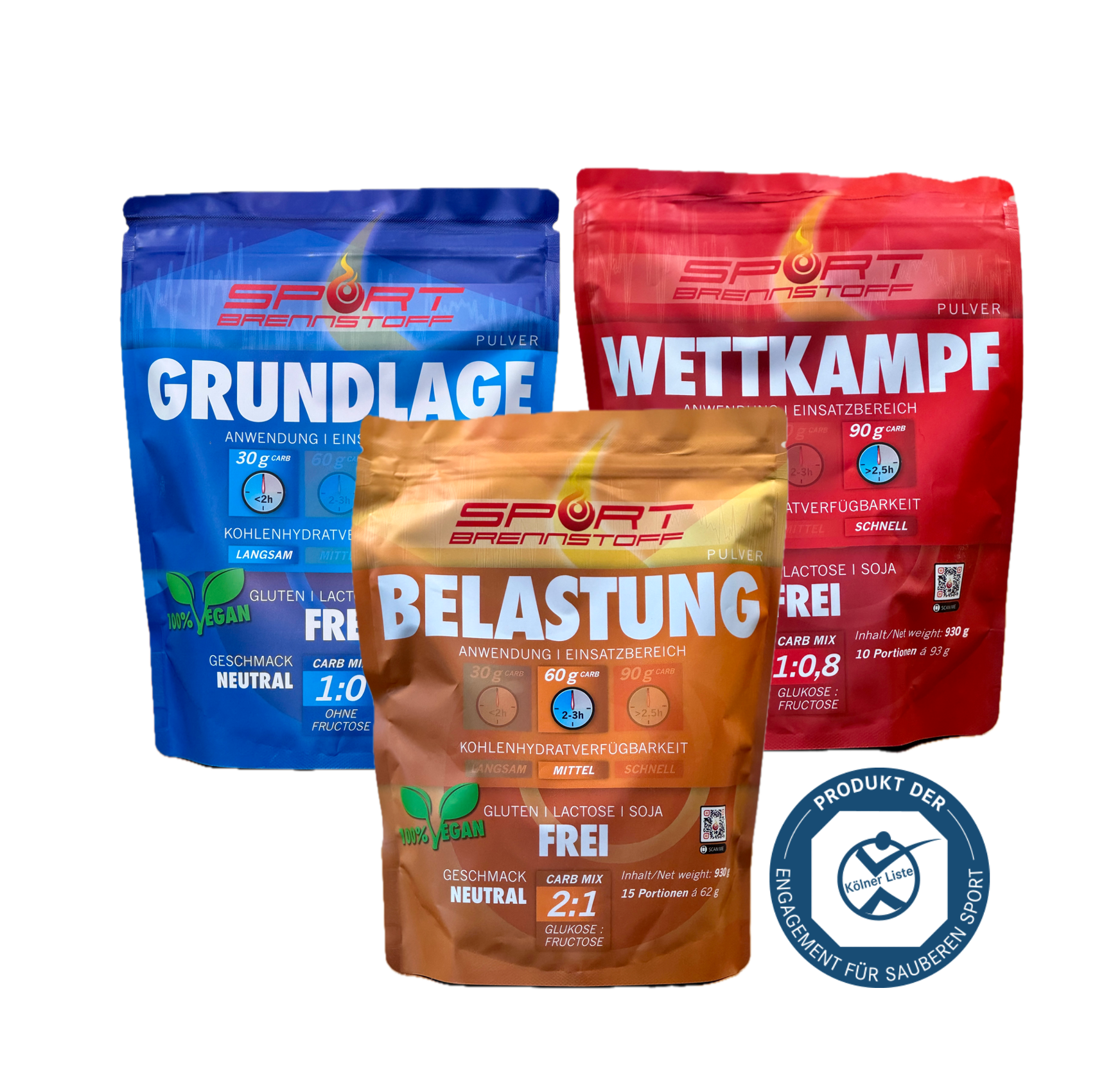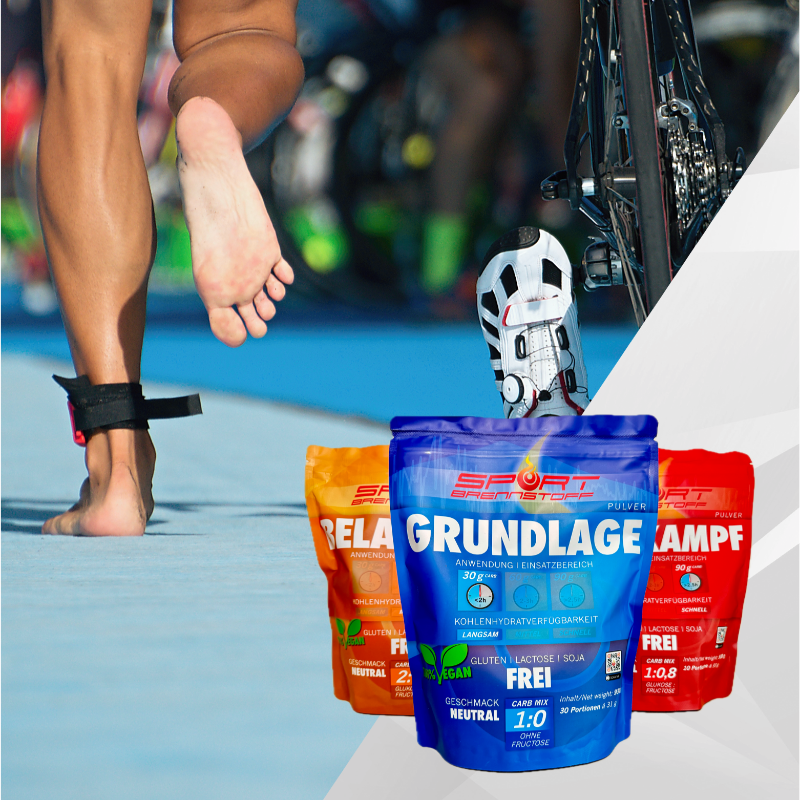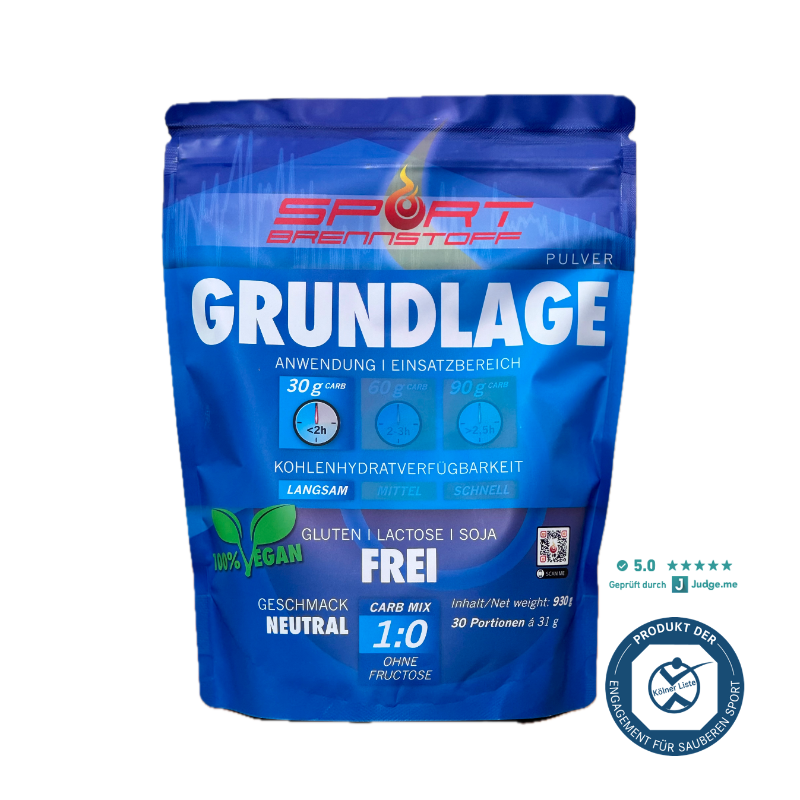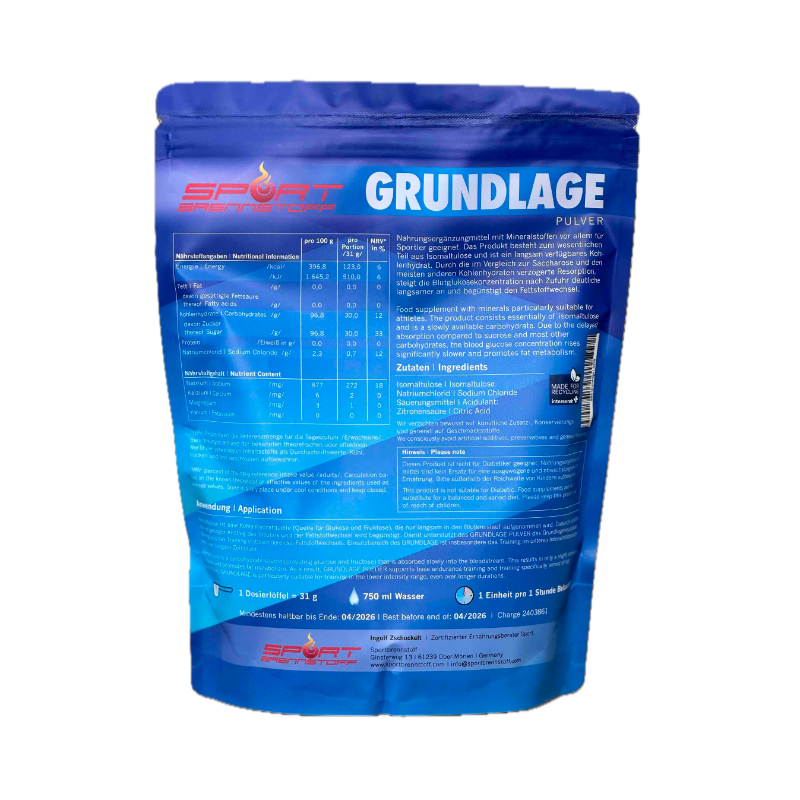Ich bin begeistert, Geschmack und Konsistenz sind top. Ich werde es wieder kaufen!
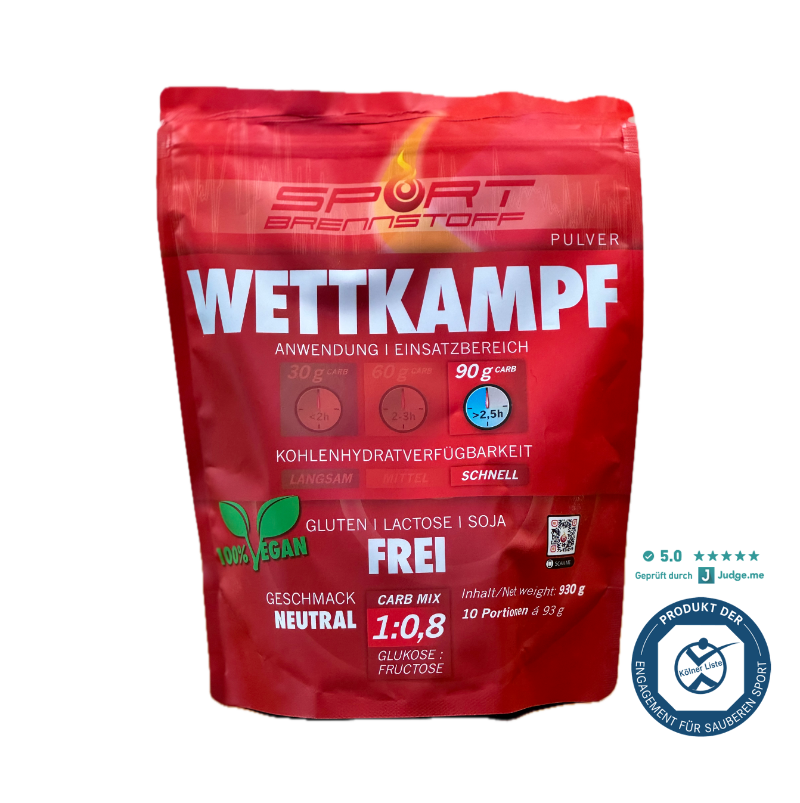
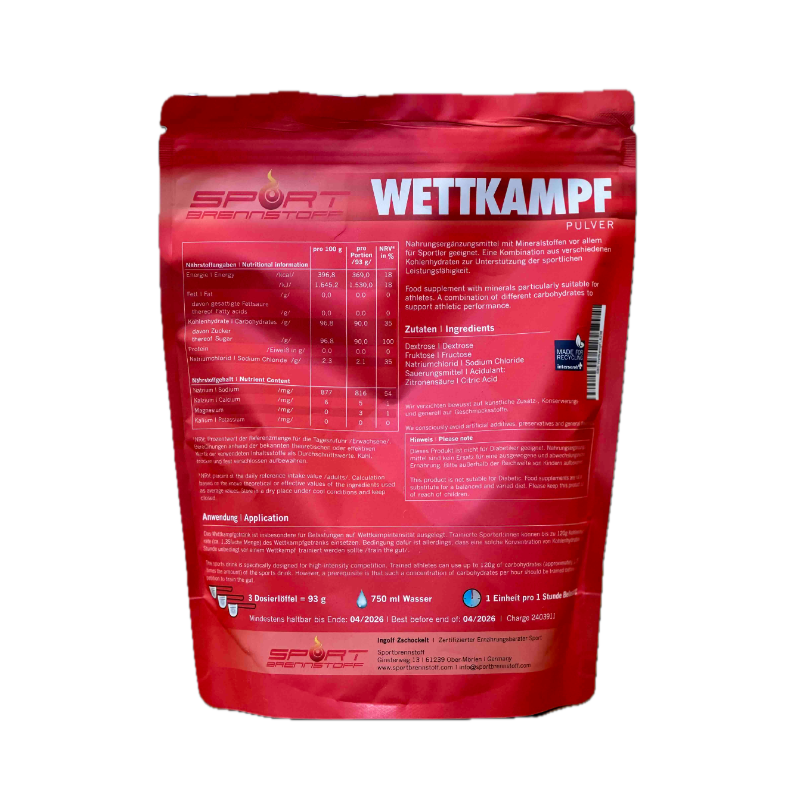
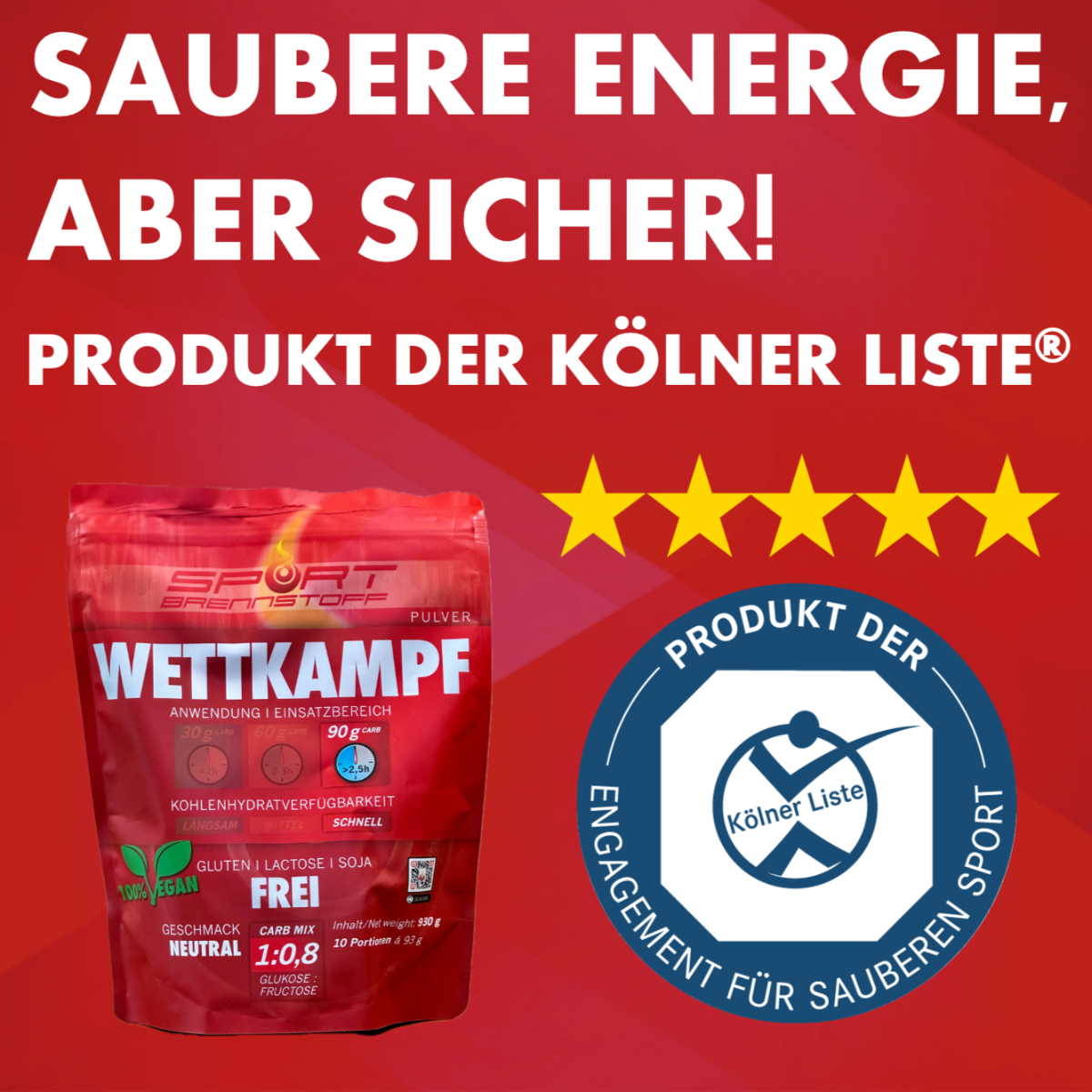
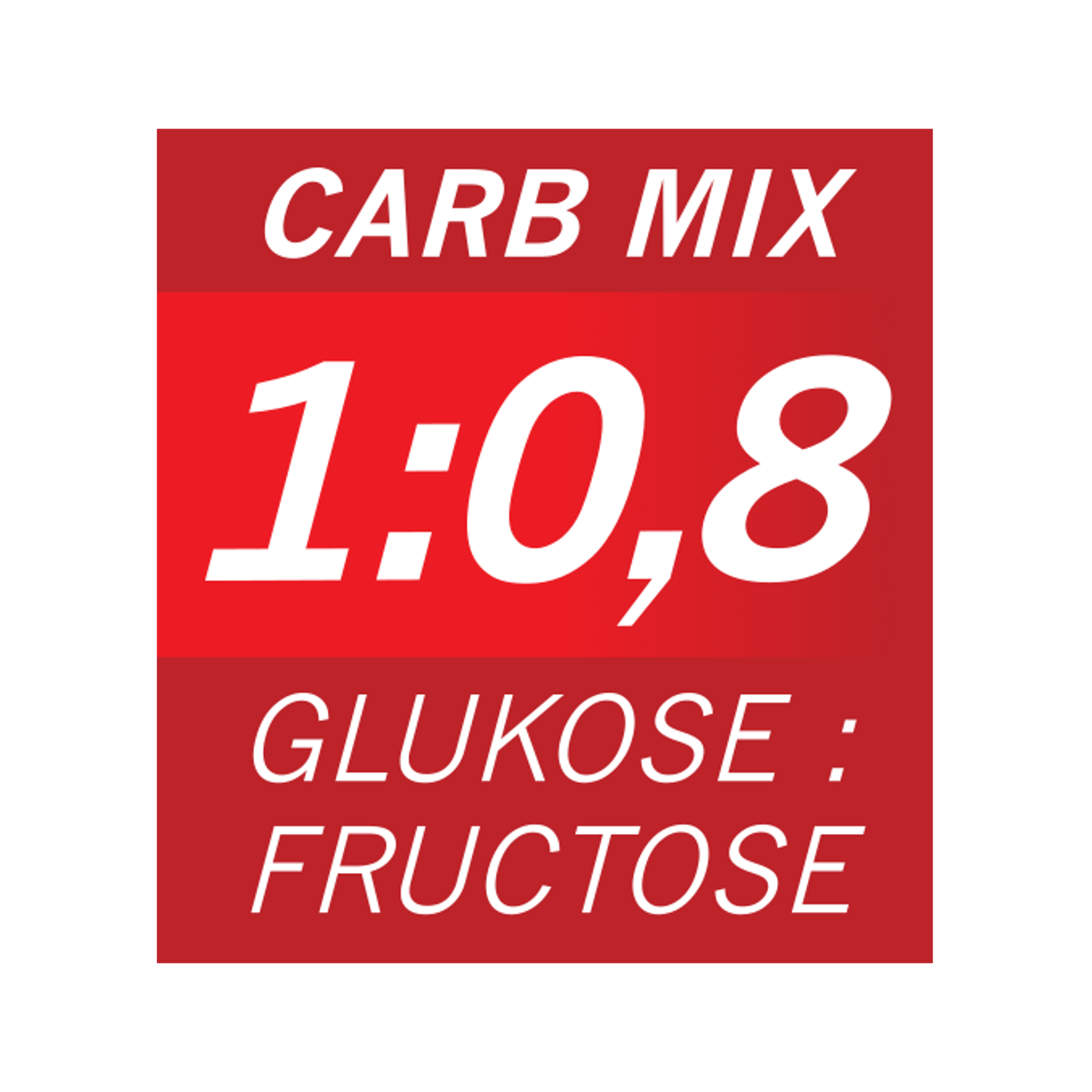
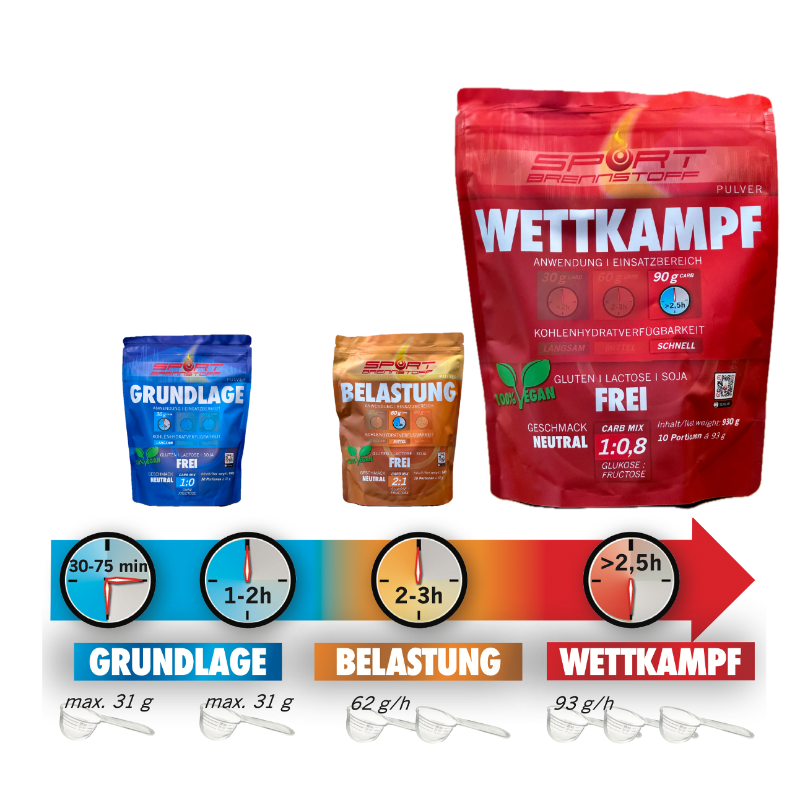
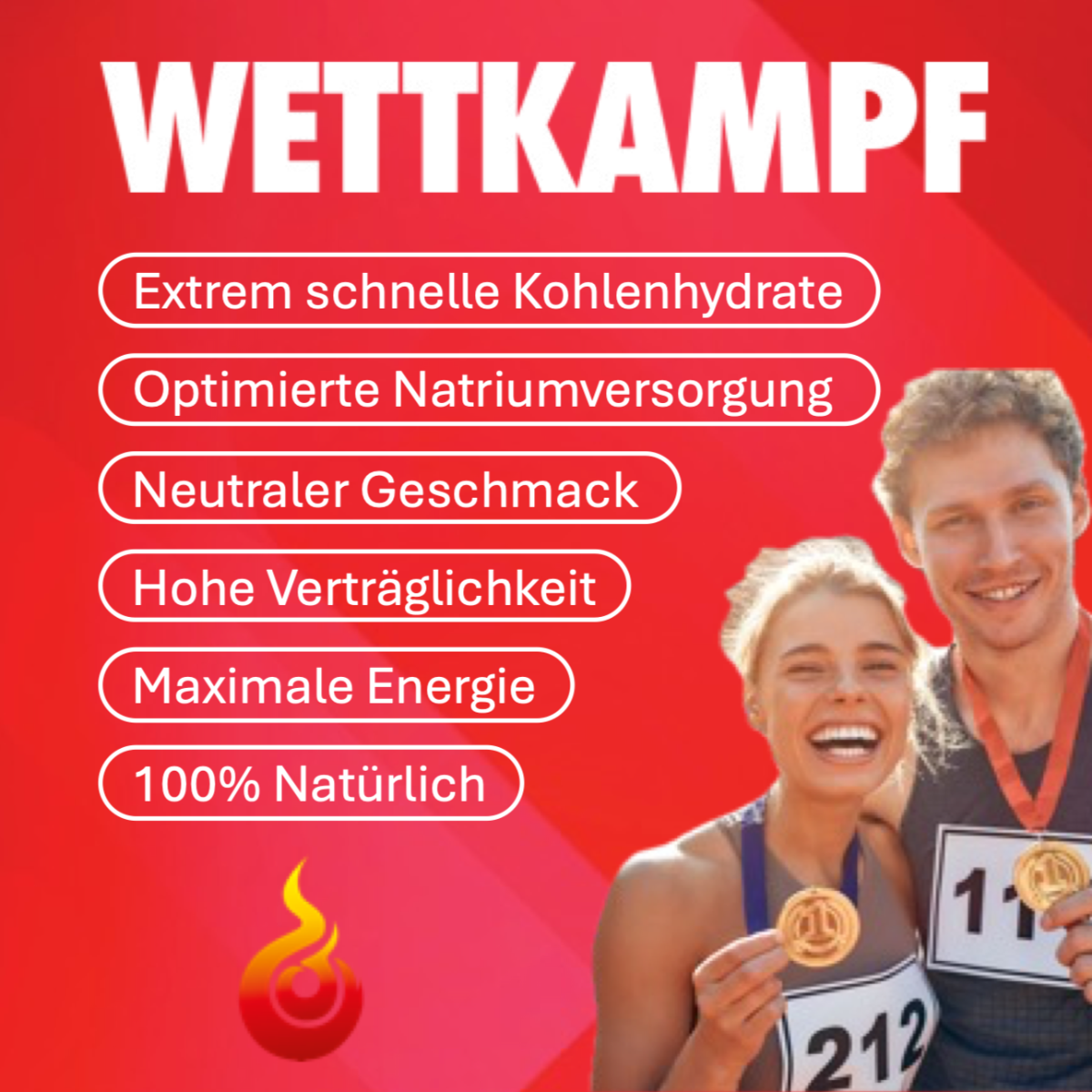
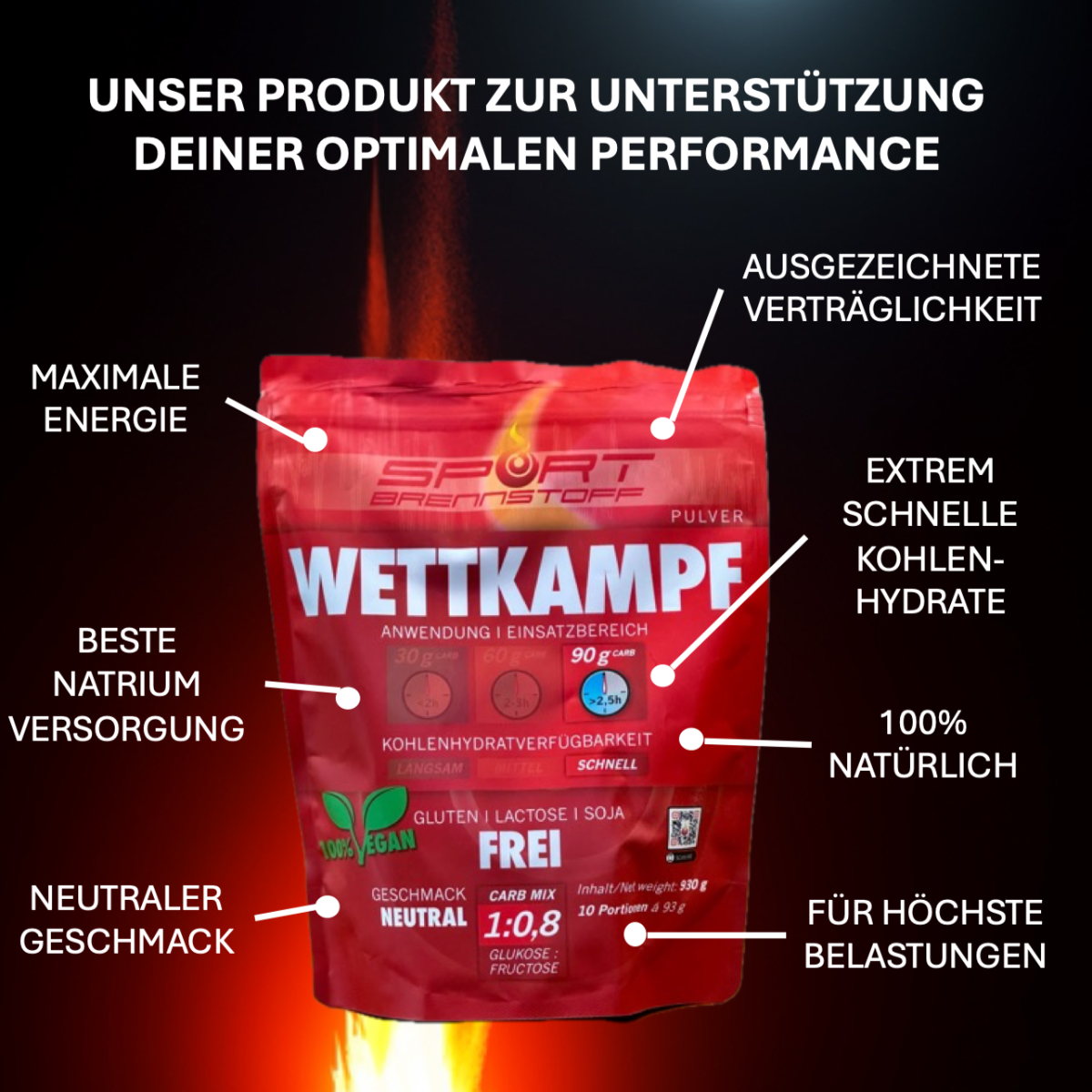
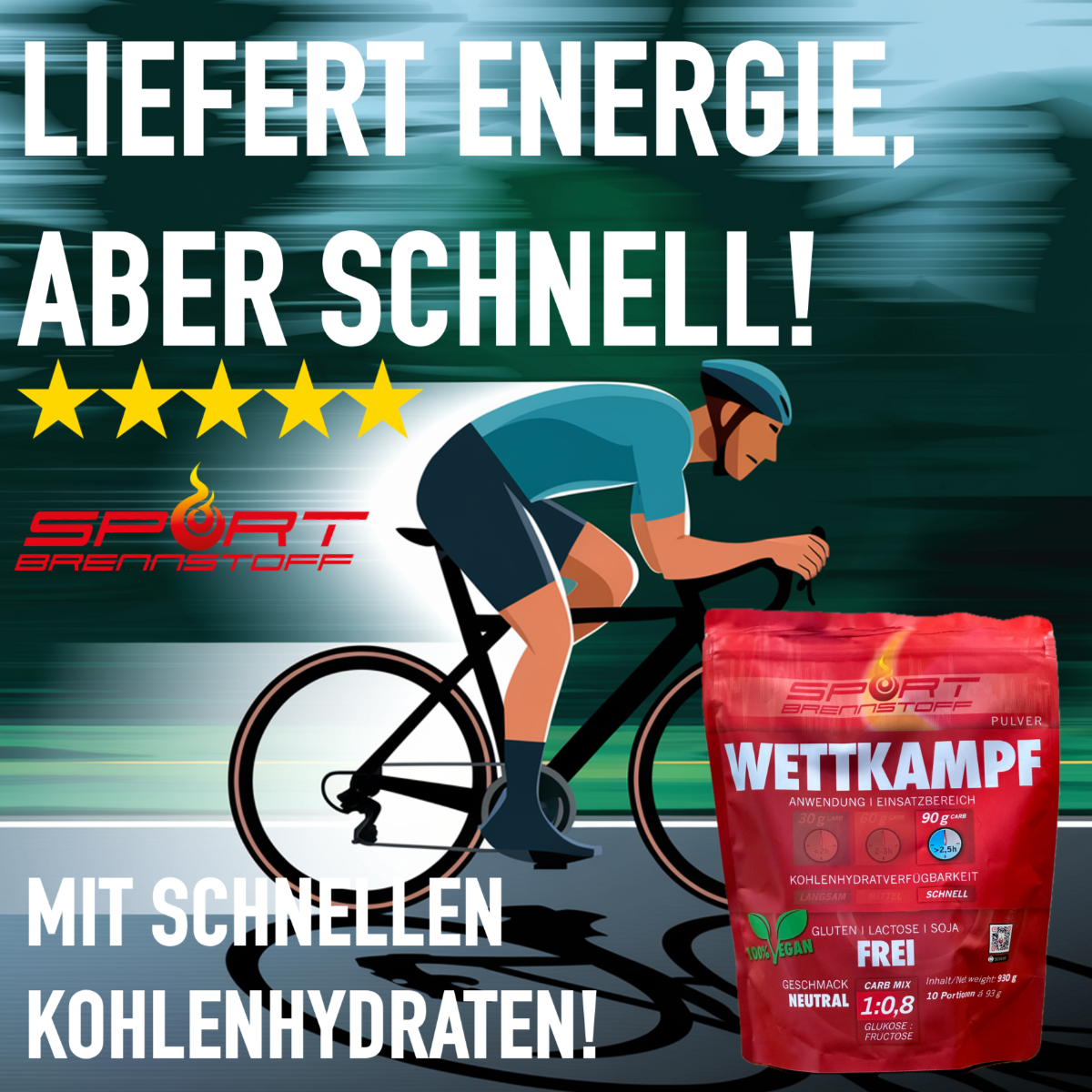
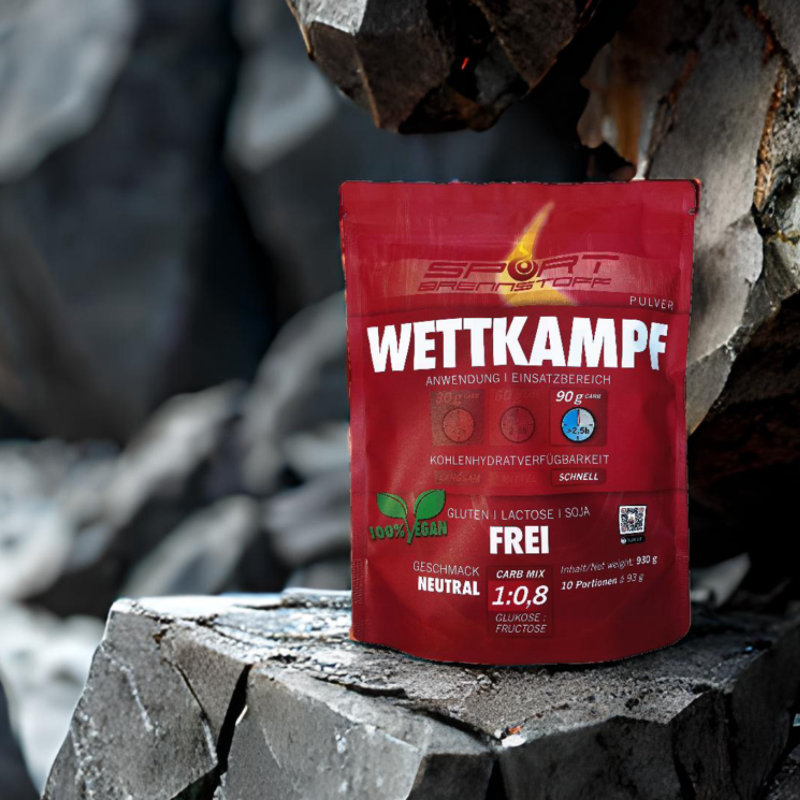

SportBrennstoff WETTKAMPF
- Particularly fast KH as dual-source carb
- Particularly good tolerability
- Isotonic sports drink with carbohydrates in 750ml
- Provides you with 90g of carbohydrates per hour (max. 120g)
- Easy to use, precisely dosed
- Neutral, natural "original" taste
- Content: 930g I 10 portions of 93g each

Product information
SportBrennstoff WETTKAMPF - Maximum performance for your competitions
|
Experience a new dimension of energy supply with SportBrennstoff WETTKAMPF, which has been specially designed for demanding exertion and competition situations. Optimized for intensities over 2 1/2 hours, this powder offers an exceptional energy supply to help you achieve your sporting goals. |
|
Our unique dual-source carbohydrate source ensures fast and efficient energy availability. Combined with the pure sodium source sodium chloride and the acidifier citric acid, this product ensures that you can access your peak performance at every moment. |
|
Thanks to the ratio of glucose to fructose of 1:0.8, trained athletes can use up to 120g of carbohydrates per hour in the form of a 750ml drink to increase their efficiency. SportBrennstoff WETTKAMPF impresses with its lack of artificial additives, preservatives and flavorings. |
|
The recommended dosage should be tested in training and adjusted to competition use in order to develop the full potential and achieve the so-called " train the gut " effect. |
|
Rely on SportBrennstoff WETTKAMPF and experience powerful support for your next competitions |
_____
Vegan – Suitable for vegans, but not independently certified as such
Vegetarian – Suitable for vegetarians, but not independently certified as such
Gluten-free – Gluten-free, but not independently certified as such
GMO-free - GMO-free, but not independently certified as such
Dairy-free – Dairy-free, but not independently certified as such
Egg-free – Egg-free, but not independently certified as such
Celery Free – Celery free, but not independently certified as such
Sesame Free – Sesame free, but not independently certified as such
Soy-free – Soy-free, but not independently certified as such
Wheat-free – free from wheat, but not independently certified as such
This product is not suitable for diabetics. Food supplements are not a substitute for a balanced and varied diet. Please keep out of the reach of children. The acidifier is citric acid (E330), which is included at 2% per portion (i.e. 0.6g per portion).
We accept our responsibility to preserve biodiversity and protect our environment. To this end, we have implemented the following initiatives:
1. Complete compensation of CO2 emissions from the shipping process together with Deutsche Post / DHL .
2. Participation in the complete recycling process for our packaging together with the Green Dot.
3. We plant trees and care for trees with our active participation in cooperation with sie kam sah und säte!
Cologne List® - our voluntary commitment to clean sport - Our product SportBrennstoff WETTKAMPF is on the Cologne List® for products with a minimized doping risk.
_____
The Cologne List® is an initiative for doping prevention and lists nutritional supplements (NEM) that have been tested for selected doping substances by a laboratory that is a world leader in NEM analysis for doping substances.
_____
As a partner of the Cologne List®, we ensure greater transparency in a very heterogeneous market and support athletes, teams, clubs and associations in assessing these products.
_____
The Cologne List® is not only an indispensable partner in elite and competitive sports, but also for recreational and amateur athletes, because who would want to use products that may contain banned substances and thus pose a health risk?
Advantages
High Energy
Maximum energy supply with up to 120g of carbohydrates per hour.
Fast Energy
Extremely fast carbohydrates thanks to dual-source carb source with extremely high glycemic index.
Compatible
Particularly well tolerated due to the high-quality ingredients and neutral taste (free from artificial additives and preservatives).
Isotonic
Isotonic sports drink with a high carbohydrate and sodium content for optimal supply during competition.
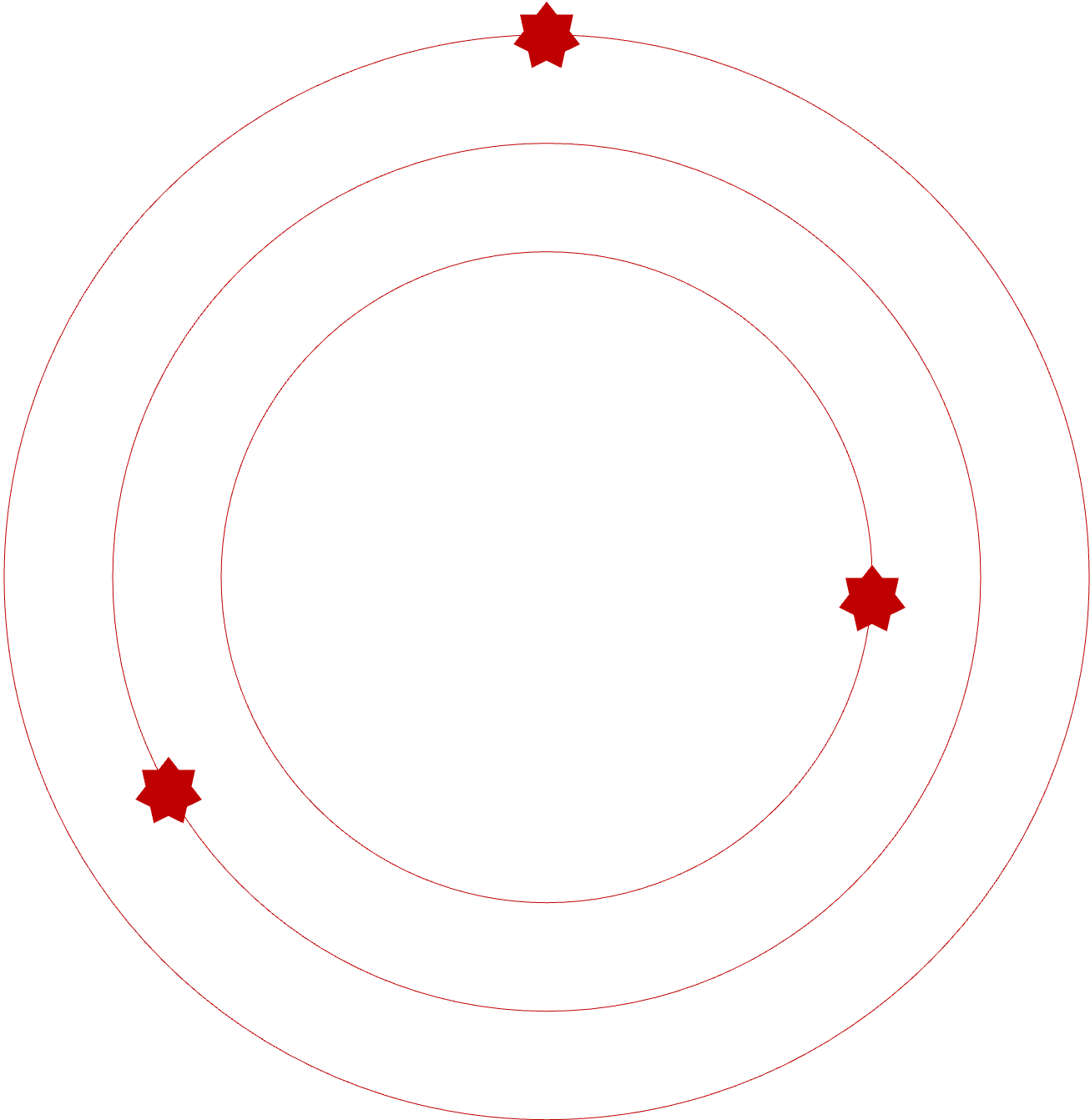
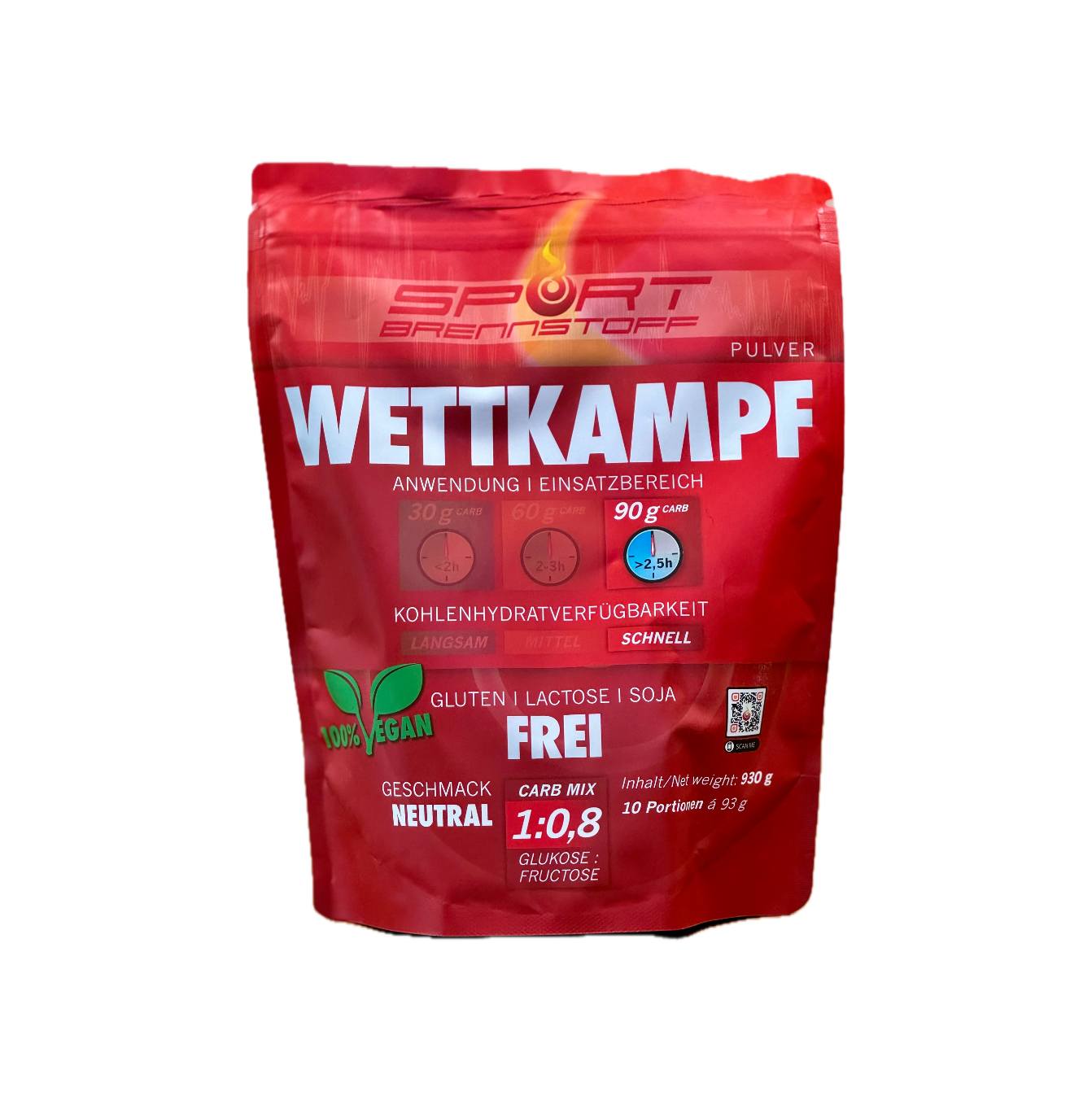
High Energy
Fast Energy
Compatible
Isotonic
High Energy for your maximum performance
Extremely fast carbohydrates
High tolerability thanks to neutral taste
Isotonic drink with high carbohydrate content.
What our customers say
based on +222 reviews

Achieve your goals!
The right sports nutrition during your race can determine whether you achieve your goals or not. Quick availability and high digestibility are crucial for intensive sessions, long periods of exertion or during competition. With our special formula, we provide maximum energy particularly quickly.
We also left out everything that wasn't absolutely necessary. Absolutely focused on energy!
Our commitment to your success!
High-quality ingredients
We rely on a few, high-quality ingredients to specifically support intensive competition training or performance when it matters. This saves glycogen stores and improves tolerability. Maximum energy for your peak performance.
Dextrose
Fructose
Sodium chloride
Acidifier
We rely on a few, high-quality ingredients to specifically support intensive competition training or performance when it matters. This saves glycogen stores and improves tolerability. Maximum energy for your peak performance.
Full power for the machine!
Peak performance also requires a highly efficient fuel so the engine can run at full speed. We focused on this and developed our SportBrennstoff. SportBrennstoff for your maximum performance!
Let customers speak for us
Frequently Asked Questions
We are happy to answer your individual questions about the products. Below we have compiled the most frequently asked questions and their answers. If you cannot find an answer, please feel free to contact us.
How good is the solubility of the products?
The products are characterized by a high solubility due to their composition. The powder dissolves in the prescribed dosage within a few minutes and leaves no lumps or crumbs. The solution is completely colorless and does not leave any discoloration in drinking bottles or similar.
How do the products taste?
We use glucose sources in different compositions and concentrations. Therefore, the products with higher doses taste a little sweeter than the products with lower doses. The salt works together with the citric acid to create a pleasant, slightly sour taste (slightly lemony) that is well tolerated over several hours.
Do I need extra salt if I sweat a lot?
Why are there no vitamins included?
In the area of antioxidants, vitamins are counterproductive in stressful situations when it comes to achieving adaptations in performance. Antioxidants suppress oxidative processes in the body that are necessary for adaptations. Other vitamins make no sense in a targeted sports diet. They are usually not absorbed in stressful situations or they disrupt the metabolism. For this reason, we have dispensed with any vitamins as additives.
Why are there no other minerals included besides salt?
All other minerals are not necessary in the specific stress situation and are not absorbed in the intended form. There is also a risk that these minerals may be useful in a single dose, but can lead to an overdose over several hours. For this reason, we completely avoid adding minerals. Magnesium, for example, has to be stored in the form of a depot over several days anyway. Acute supply in the stress situation therefore makes no sense at all.
Example potassium:
Potassium and magnesium complement each other in their effects. A maximum of 150mg of potassium should be consumed per 750ml (one drinking bottle). If we calculate this over a long distance of 12 hours with one drinking bottle each, that means that the athlete would consume a total of 1800mg of potassium. That is then combined with 100mg of magnesium per hour, which would mean that the total intake would be 1200mg. This combination is very likely to have a laxative effect. In addition, potassium can lead to vomiting and nausea in large quantities. But taking potassium during exertion makes no sense at all. Potassium is necessary for building up glycogen stores and is stored with them. The release of the necessary potassium during exertion occurs in conjunction with the glycogen stores. So with proper preparation, there is enough potassium stored in the body. The same applies to magnesium. The depot is important here. Intake during exertion carries the risk of having a laxative effect and only putting additional strain on the stomach and intestines. That is why we do not use these additives.
Why are there no proteins included?
Proteins have an anabolic effect and are also used to generate energy during exercise. However, there are sufficient physical reserves to make these proteins available in small quantities. The substances that are important for energy are dextrose, fructose and sodium. We have limited ourselves to these, as we work specifically in stressful situations. Using proteins for regeneration makes sense and should be done with a readily available protein source in a protein:carbohydrate ratio of 1:5.
Are the products anti-doping compliant?
All of our products fully comply with the regulations of the World Anti-Doping Agency (WADA) according to the latest publications ( current list ). We have also deposited the conformity statement for our respective products. Our products are manufactured exclusively in Germany and certified under ISO 22000 and FSSC 22000. The individual batches are numbered, certified and documented. All batches are documented in a traceable manner and these certificates can also be requested if required. We are absolutely transparent!
Why should I add LOAD from the start to more than 2 hours of basic training?
The classification of products into the stress ranges provides a guideline for differentiation. However, the energy supply is ultimately decisive for the use of a product depending on the duration and intensity. The glycogen stores are the limiting factors.
With a total glycogen reserve of around 2,600 kcal, 150g / 600 kcal are in the liver and around 500g / 2,000 kcal are in the muscles. With an hourly consumption of between 600 kcal and 800 kcal in the area of zone 1 to zone 2, the liver glycogen is roughly used up after one hour. The muscle glycogen stores are still about half full even after 2 hours with a supply of 30g of carbohydrates per hour.
However, in the first step, the glycogen stores from the liver (150g, 600 kcal) are activated. To activate the glycogen stores in the muscles (approx. 500g, 2,000 kcal), the muscles need more intensive exercise. This means that these glycogen stores are not activated as strongly in zone 2 (fat burning training). This means that more than 2 hours of fat burning training with 30g of carbohydrates per hour also leads to an increased feeling of exertion.
This is also the reason why a fasting run for longer than 1 hour makes no sense. Then the liver's glycogen stores are used up and the muscle glycogen would have to be activated.
Fat burning always occurs in combination with glycogen burning. Fat burning requires atoms from glycogen burning to work efficiently.
Now you want to do basic training for over 2 hours. To do this, however, you want to avoid the feeling of strain as much as possible and be well supplied with energy. The energy supply plays a major role here and from the start you should therefore also provide the appropriate amount of exercise. This protects the liver glycogen stores (and also the muscle glycogen stores). In addition, the body gets used to the energy supply from the outside with exercise (glucose/fructose). For this, I used a special composition of the various glucose sources during exercise (we are the only ones who do this) and combined it with 1:1 fructose. The fructose goes directly to the liver as a replacement for liver glycogen.
However, if you are exercising in a controlled, relaxed manner and there are no peaks in the load, it would also be possible to work with a base of 60g (double portion). This is best done on an exercise bike/smart trainer, where the load can be controlled extremely well. This would result in particularly good fat metabolism training. It would definitely make sense.
What is the difference between glucose and dextrose?
Glucose and dextrose are types of sugar, just like fructose . However, it is important to note that the term "sugar" is often used as a synonym for table sugar. Let's clarify the differences.
Dextrose belongs to the group of carbohydrates, which, along with fats and proteins, are the most important nutrients for humans. It is the most important simple sugar and is also commonly called grape sugar or, in medicine, glucose. However, the different names always refer to the same molecule.
In ingredient lists, however, the legally prescribed names must be used. According to the Sugar Types Regulation, "dextrose" (monosaccharide) and "sugar" (sucrose, disaccharide) are defined differently. Monosaccharides are dextrose on the one hand and fructose on the other. According to the regulation, dextrose must also be listed separately in the ingredients.
Dextrose is a monosaccharide with a particularly high glycemic index and is contained in our products as dextrose monohydrate. This means that this molecule is already optimally available for absorption in the digestive tract. This means that this dextrose is also very quickly available in the body. This makes dextrose particularly interesting for use as a carbohydrate in sports.
In the food industry, glucose dry powder is often abbreviated to dextrose. Glucose dry powder always consists of one part dextrose (grape sugar, simple carbohydrate) and one part glucose (complex carbohydrate) due to the production process (enzymatic breakdown). Dextrose dry powder D30 is often used, which means a dextrose content of 30%. It is obtained from grain and is now also available in organic form.
The term maltodextrin , on the other hand, is a combination of the words maltose (malt sugar, complex carbohydrate) and dextrose (grape sugar, simple carbohydrate) and a mix of different carbohydrates. Maltodextrin has the special feature that although it binds little water, it dissolves easily in water. Maltodextrin is essentially obtained from corn starch, which in turn is obtained from genetically modified corn plants.
Maltodextrin and glucose dry powder are also generally referred to as glucose syrup or glucose syrup dry powder. The production of both products is identical. Only the raw materials used differ.
Dextrose, glucose and maltodextrin contain little or no fructose. This means that, in combination with a separate fructose source, a specific glucose:fructose ratio can be created.
Complex carbohydrates take longer to be absorbed by the body. The body must first convert the complex sugars into simple sugars in order to be able to absorb the resulting dextrose. Accordingly, it is important which ingredients are actually contained in the product. The composition determines the speed at which carbohydrates are available.
The listing of nutrients in the nutritional table is regulated differently than the listing of ingredients in a product. Nutritional labelling is mandatory for almost all pre-packaged foods throughout the EU. This is stipulated by the EU Food Information Regulation No. 1169/2011 (LMIV). Here, the addition of all monosaccharides and disaccharides is mandatory under the term "sugar".
The confusion caused by the use of different names cannot be easily resolved. However, we have consciously decided to provide the ingredients list in as much detail as possible in order to create clarity about the ingredients. We believe it is more important that it is clear what is contained in the commercial name.
By the way, household sugar (table sugar) has nothing to do with glucose powder or dextrose monohydrate. Household sugar comes from sugar beet and always contains 50% fructose. This glucose:fructose ratio of 1:1 has been judged to be physiologically unfavorable in endurance sports under stress conditions. This has been shown by various studies.
Sources:
https://www.lebenmittelklarheit.de/fragen- Answeren/was-ist-der-Different-zwischen-dextrose-und-zucker
https://www.gesetze-im-internet.de/zuckartv_2003/ZuckArtV_2003.pdf
https://www.bzfe.de/lebensmittel/einkauf-und-kennzeichen/kennzeichen/naehrwertkennzeichen/
https://journals.physiology.org/doi/full/10.1152/ajpgi.00419.2010

Safe shopping with many options
-
Free shipping from €60
-
Fast shipping / delivery within approx. 3 working days
-
Our contribution to protecting the environment.
-
Cologne List© - our voluntary commitment to clean sport.
















